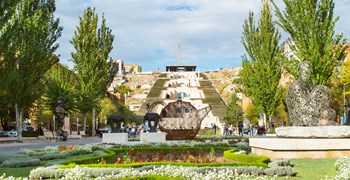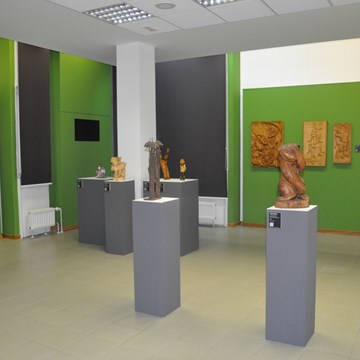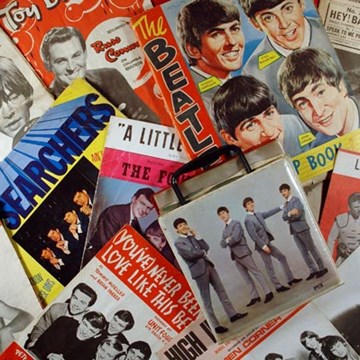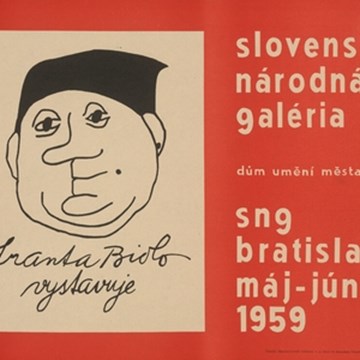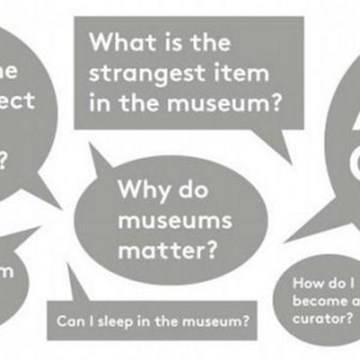Sasuntsi Davit Relief
In the 1980s, when the Cascade was being constructed, architect Jim Torosyan (1926-2014) invited sculptor Artashes Hovsepyan to design one of the galleries in the future complex. The artist with the help of four masons worked for four years in the hall which is now called Sasuntsi Davit Gallery. The national epos was always captivating for the sculptor. He had already had the opportunity to create reliefs relating the Armenian epic poems in Sasuntsi Davit Subway Station: Great Mher, Little Davit and Qurkik Jalali, Davit the Shepherd, Little Mher and other works attract attention by their monolithic composition, simple decorative and rhythmic array, as well as monumental-stylistic symbolic forms.
The multi-figure composition in Sasuntsi Davit Gallery, depicting more than thirty episodes from the Armenian epos, is the sculptural version of the famous graphic work (Sasuntsi Davit, 1922, Collection of National Gallery of Armenia) by renowned Armenian artist Hakob Kojoyan (1883-1959). After the destructive earthquake of 1988 and the collapse of the Soviet Union, this tufa relief has remained unfinished.
Sasuntsi Davit Relief is approximately 15 times larger than the original graphic piece. However, Artashes Hovsepyan was not just a copier or a “translator” from drawing to sculpture. With the language of sculpture and new artistic means of expression he tried to show and unveil the monumental power hidden in Kojoyan’s work. This creation has got an unusual compositional structure: the main hero of the national epic poem, Davit, is in the center riding his horse, Qurkik Jalali, holding the lightning-laden sword at the moment of a charging attack. This central frame is surrounded with other compositions presenting various episodes from Davit's life, including the birth of Sasuntsi Davit, his first hunt, crucial chapters from his fight against Msra Melik and other epic moments (with appropriate quotes from the epos below every image). In the bordering frames of the relief are depicted decorations, landscapes, walls of castle, the Maruta Monastery etc. In this sculpture Artashes Hovsepyan managed to transfer the small watercolor art piece by Kojoyan to the stone with such a monumental resonance that all the details appear to viewers as protruding in high relief from the surface.
The sculptor Artashes Hovsepyan was born on June 22, 1931 in Sarnakunq village of Armenia (Syunik region). In 1954 Artashes Hovsepyan entered Panos Terlemezyan Yerevan State College of Fine Arts, but from the second grade he was transferred to Leningrad (nowadays Saint Petersburg) to study at Ilya Repin State Academy Institute of Painting, Sculpture and Architecture, from which he graduated in 1961. In 1989 the sculptor received title of Honorary Worker of Arts.
One of the most prominent works by Artashes Hovsepyan is the statue of the celebrated Armenian architect Aleksander Tamanian (1974, architect: Seda Petrosyan), which is located in the heart of Yerevan marking the entrance to the Cafesjian Sculpture Garden. The maestro created this piece, winning the competition for the sculptural monument by taking both the first and second places.
There are more than 50 sculptures in the round, reliefs and busts by Artashes Hovsepyan in Yerevan and various cities in Armenia; monumental works, monumental-decorative and indoor sculptures. Among his works are the reliefs of Saint Sarkis Cathedral (1975, Yerevan, architect: Rafael Israelyan), the Monumental Eagle at the entry to the City of Sisian (1975), the reliefs of Yerevan Brandy Factory (1975-1993), the reliefs of Sasuntsi Davit Subway Station (1981, Yerevan Metro after K. Demirchyan), the statue of composer Armen Tigranian (1987, Yerevan, architect: Fenix Darbinyan), the monuments of the scholars Orbeli Brothers (1988, Tsakhkadzor, architect: Romeo Julhakyan), the memorial monument of historian Nicholas Adonts (1993, Sisian, architect: Romeo Julhakyan), the reliefs of the Church of Saint Resurrection in Kashatagh (2003), the memorial of Armenian Gusan Jivani in Javakhk (2006, Akhalkalaki). He was also the author of sketches for the reliefs of Saint Vardan Cathedral in New York (architect: Rafael Israelyan, 1969). One of the latest works by the sculptor is the statue of the celebrated Armenian writer Hrant Matevosyan in the yard of the homonymous school (2013, Yerevan). In the 1960s -1980s Artashes Hovsepyan created several splendid sculpture portraits. He has also created hundreds of graphic works during his artistic career. “In the artistic processing of stone Artashes Hovsepyan has always been faithful to the old traditions of Armenian fine art and architecture. He avoids depicting details and choses more general approach, simply relating massive volumes and surfaces or creating dramatic contradistinctions of forms. Artashes Hovsepyan's clear and firm compositions, his ability to convey the unique tangibility of hewn stone endow the sculptures with monumental power”,- states Ararat Aghasyan, Doctor of Art History, Professor.
Exhibitions and events

Mural by Grigor Khanjyan
Permanent exhibitionLocated in Khanjyan Gallery is the monumental mural executed by the well-known Armenian painter Grigor Khanjyan (1926–2000). Commissioned for the original Soviet monument but left unfinished at...

In the Mind of the Collector
Permanent exhibitionThroughout his life, Gerard L. Cafesjian has indulged a passion for collecting that encompasses areas lying outside the arena of contemporary art. His varied interests are on continuous display in...
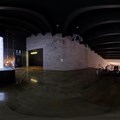
Swarovski Crystal Palace
Permanent exhibitionCafesjian Center for the Arts features a selection of Swarovski Crystal Palace chandeliers, designed by Vincent Van Duysen, Tord Boontje, Georg Baldele, Michael Anastassiades and Diller Scofido +...
Activities from this museum
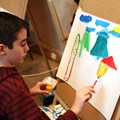
The Landscape of My Country
Ahead of International Musuem Day and Museum Night Events, the theme of which...
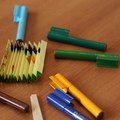
Spring Carnival
The educational program Spring Carnival is based on the exhibition Robert...
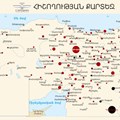
Mapping the Memory
Mapping the Memory (based on the exhibition Silence of My Grandmother’s...
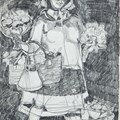
Armenian Collages
Armenian Collages (based on the exhibition, Sarkis Hamalbashian: Armenian...
